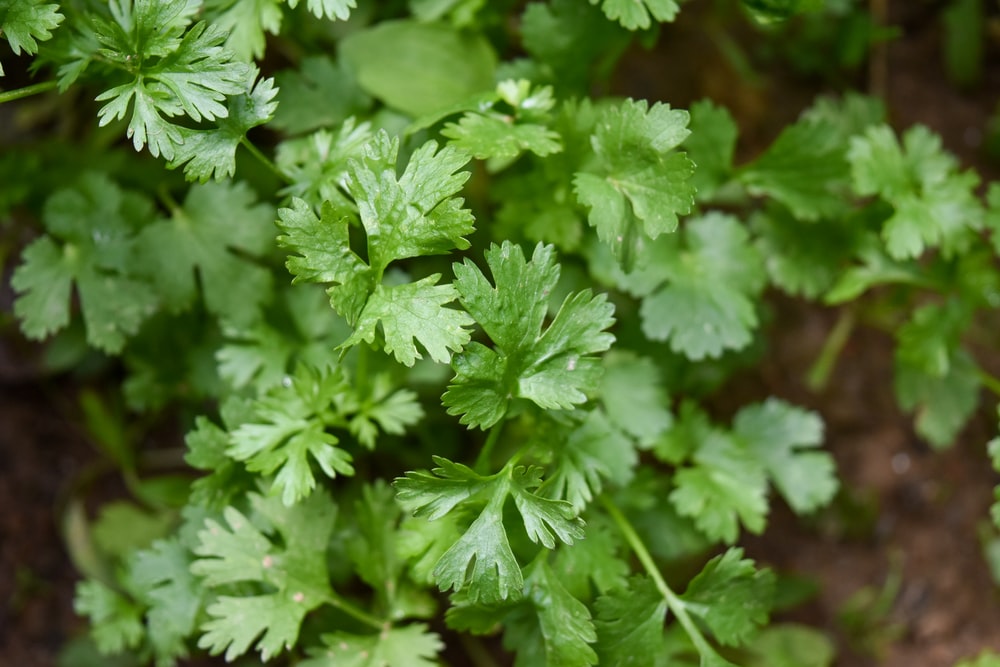

Coriandrum sativum L.
|
Coriander is a green leafy vegetable belonging to the family Apiaceae. Corianders are rich source of carotenoids (beta-carotene) and flavonoids (quercetin) which possess anti-oxidant properties. These compounds help indecreasing lipid peroxidation in erythrocytes and also anti-platelet aggregation by reducing calcium ions in the blood. The consumption of coriander improves immunity by increasing the numbers of lymphocytic cells like CD8+ T cells and IFN-γ. Mode of Consumption : Salad, garnishing |
| Plant Details | Agro-climatic Zone | Vernacular Names | Pictures |
| Scientific Name: Coriandrum sativum L. Family: Apiaceae Lindl. Class: Magnoliopsida Order: Apiales Genus: Coriandrum L. Fruiting Season: October - January Parts: Leaves |
|
Andhra Pradesh : Kottimira Assam : Dhoniya Bihar : Dhania Himachal Pradesh : Dhania Karnataka : Kottambari Kerala : Malliyila Punjab : Dhania Tamil nadu : Kottamalli Uttar Pradesh : Dhania Uttarakhand : Dhania West Bengal : Dhane |
 Fresh leaves |
| Compound/Extract | Activity | Mode of Action | Marker/References |
| Leaf powder extract | Immunomodulatory | Leaf powder extract increases the number of lymphocyte cells including CD8+ T cells, elevation of IFN-γ secretion and activation of PBMC. | CD8+ T cells and IFN-γ[2] |
| Leaf powder extract | Antioxidant | Leaf powder extract decreases the lipid peroxidation in erythrocytes and ESR. | Lipid peroxidation and ESR level[3] |
| Major Class | Metabolites (Content of bioactives: mg/100g Fresh Weight) |
| Carotenoid | β-Carotene: 73.64 mg/100g[2] |
| Flavonoid | Quercetin-3-O-rutinoside: 329.62 mg/100g[2] |
| Effect | Observation | DOI |
| Disease | Formulation | Reference | Author | TKDL |
| Vataja(Vataja), Pittaja(pittaja), All types(sarvaprakrake), Pyrexia(jvara) | Dhanyapaolakaya | Cakradatta | Cakrapanidatta,Translated by Indradeva Tripathi, Published by Chaukhamba Sanskrit Sansthan (Varanasi), Edn. 4th 2002. | Ayurveda |
| Vertigo and giddiness associated with blood and bile | Joshanda Tirphala | Quaraabaadeen Azam wa Akmal | Mohammad Akmal Khan, Matba Siddiqi, Delhi / Matba Mustafai, Delhi, 1897 | Unani |
| Epistaxis(Nakseer) | Khesanda Barai Nakseer | Quaraabaadeen Najm-al-Ghani | Mohammad Najmul Ghani Khan, Munshi Nawal Kishore, Lucknow, (Second Edition) 1928 | Unani |
| Gonorrhoea (Suzaak), Spermatorrhoea(Sailaan-e-Mani/Jarayaan-e-Mani) | Khesanda Jiryaan-e-mani | Quaraabaadeen Najm-al-Ghani | Mohammad Najmul Ghani Khan, Munshi Nawal Kishore, Lucknow, (Second Edition) 1928 | Unani |
| Information from Wealth of India | Reference |
|
CSIR(1950).The Wealth of India, Raw materials,Vol.-II ,P.347-350, New Delhi, India |
| 4.2, 04.2.1, 04.2.1.1, 04.2.1.3, 04.2.2.3, 04.2.2.5, 04.2.2.6, 04.2.2.8 |
| CSIR-North East Institute of Science and Technology, Jorhat-6, Assam, India
CSIR-Institute of Himalayan Bioresource Technology, Palampur-61,Himachal Pradesh, India |